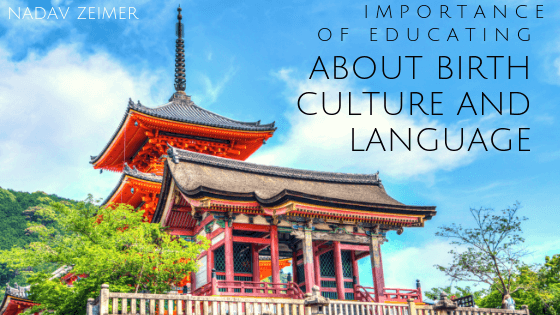As an adoptive parent, you may have little knowledge of the birth culture of your child. We adopted from Japan, and my wife grew up there, and Japanese is her first language. Still, the work of educating our daughter about her birth culture and language was no less of a struggle. To further complicate this work, my family has roots in multiple cultures, and we speak a few languages, and as my daughter, she also can’t help but feel a bond to these cultures and languages, and I can’t help enjoying her connections to my roots. With all of these connections and influences, it is still the dominant culture in the country where we live that, well, dominates her experiences. We fight an uphill battle to incorporate her heritage from a young age and to maintain that as a key element of her childhood experiences. However, even if my daughter insisted that she just wants to focus on mainstream American culture (which she has not done), I would not relent on deepening our connection to Japan. Notice it’s not “her” connection to Japan, it’s “our” connection as a family and my connection as her father. She deserves to enjoy seeing me make connections to her birth roots just as I do watching her make connections to my own.
Sometimes this must be exhausting for my wife who works to speak to our daughter in Japanese and to set up playdates with Japanese families, to plan trips to Japan, and to celebrate Japanese food and culture. I, too, don’t have much of a desire to learn Japanese – there are other languages I thought I wanted to learn before the adoption (even after I married a Japanese woman). Also, I am a vegetarian (no fish) which is an enormous barrier to learning about Japanese food, making my wife’s job even more difficult as she cannot prepare traditional dishes for me to enjoy. I can barely imagine how it feels for a family who adopts a child from a culture neither of them has immediate ties to. In fact, I am writing now on an airplane as we fly to Japan to live there for a time – that was merely the easiest way to go about it for us. When a health issue afforded us the opportunity to live abroad, we jumped on it.
Of course, not everyone can spend a year living in a foreign country, and even if they can, it would be difficult for the child to adapt to foreign schooling and lifestyle, not to mention the challenge for adoptive parents in such a scenario. There is no solution to this conundrum, but finding joy in this journey with a child is the first step. From a place of intentional joy and exploration, not for our daughter but for ourselves as parents, as learners and explorers in our own right, adoptive parents will find themselves noticing unexpected resources all around them. Actively generating a mindset of excitement and curiosity around this work must come first. That being said, any such perspective comes and goes and is not a one-shot deal. When I have the right attitude about growing my own Japanese connections, the actions occur as opportunities for my self-expression as a father and as a loving human being who aspires to spread love among diverse human beings. This is my learning which I signed up for as soon as I adopted my daughter who I love more than anything I have ever imagined.
So where to start? How do we cultivate an inspired attitude when it’s just not there? Surprisingly, noticing when joy is absent is exactly what it takes. Not faking it and not denying the feelings of failure and setback and frustration. As parents, we all want what is best for our children, and adoptive parents can be especially appreciative of the opportunity to raise their child, wanting to do everything possible to be great parents. This creates ample opportunities to beat up on ourselves and raise our expectations so high that we can only fall far and hard, making it hard to get back up. It is critical to be honest with ourselves and aware of our actual attitude about exploring a foreign culture. With compassion for ourselves and patience, we discover moments of such great joy and connection that make it all worthwhile.
To be honest, more than the cultural heritage we offer our children through this work, it is the example of how to learn, face adversity, and the nontrivial barriers that exist between cultures that will provide our child the resources she needs to celebrate her own unique life path. We learn more from failure, often than from success because what matters most is our commitment, above the results we produce. Those that fail have a large commitment causing the perceived failure – to a child, they don’t see failure, they see our willingness to struggle, and they experience our love. This is a tricky balancing act between our commitment to learn and enjoy the journey and the real moments of frustration and lack of progress. It’s a great playground to build the muscles required to live a fulfilled life.
Books, food, language, cultural events and organizations, and experiences will all play a role in our journey – the more we do this with the support of others the easier it gets, except for when these “foreign” people and ideas make it harder. It is at those moments we must find our way to keep moving forward as an example to our children of their great potential in the face of life circumstances: if we can just notice our attitude first, without having to fix or change it, we can continue moving forward in any journey filled with future joy and celebration even when the present work feels far from there. When we can be honest about our experience, when we can talk about it without shame, we can find humor in our very human sense of defeat. That’s what provides the strength to continue, and continued action is all it takes to achieve greatness.

